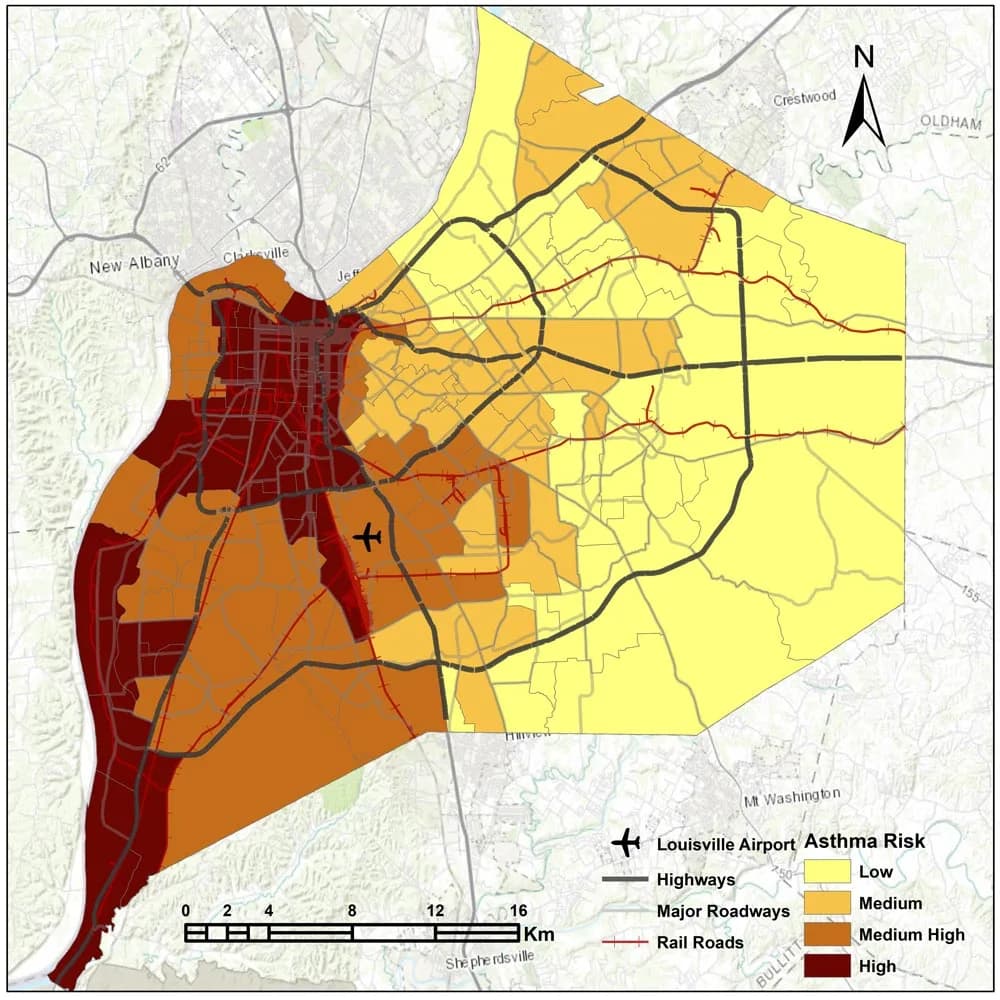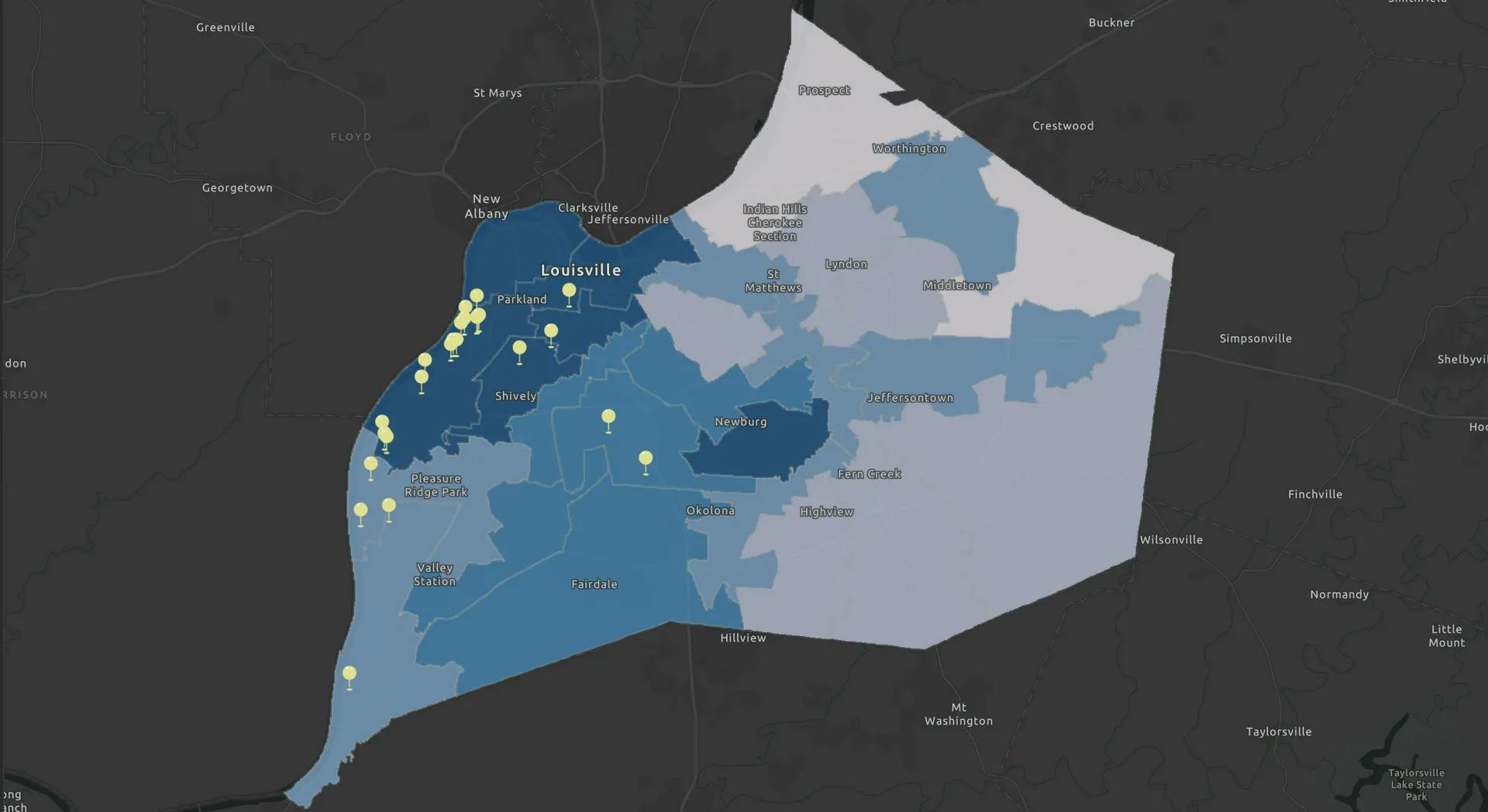“We going to agitate and agitate and agitate until justice falls down”
–Rev. Louis H. Coleman, Jr

The human health risks associated with the chemicals released in West Louisville, an area populated mostly by Black residents and other people of color, are over 10,000 times higher than the industry average in some areas. That’s why residents in Southwest Louisville are over three times more likely to contract cancer than someone living in East Louisville.
How air pollution leads to health problems, though, doesn’t always seem straightforward. With different types of air pollutants-VOCs, PMs, HAPs–and different things in our environment that make matters worse, like cars, industry, and the absence of trees, it can be tough to figure out exactly how air pollution impacts you personally.

Air pollution is damage to the environment that comes from toxic chemicals released into the air. These chemicals come from industrial facilities, cars, and even household pesticides. How air pollution affects your body depends on what toxins you inhale and how long you are around those toxins.
In Louisville, air pollution is worse in West and Southwest Louisville because Rubbertown–an area of heavy industrial pollution–sits next to the Henry Watterson Expressway (I-264). Areas like Shawnee, Shively, Chickasaw, and Park Duvall, where air quality is much worse than others, are known as “sacrifice zones.”
“Sacrifice zones” have historically received few resources from local, state, and federal governments to relieve the burdens caused by industry. Residents in these communities live with increased risk of cancer, lung problems, and heart disease made worse by poverty, food deserts, poorly-funded schools, and so forth, all of which amounts to environmental racism.

Unfortunately, toxins don’t just hang out in the air. They enter your body through your nose and lungs. The smaller the toxic particles in the air, the easier they can enter your bloodstream. Because your blood circulates through your body every minute, the toxic air you breathe can reach every cell in your body.
Inhaling toxic air can lead to asthma, cancer, heart disease, and even diabetes. Children are especially vulnerable to the effects of breathing toxic air because their bodies are still growing. Living in an area with poor air quality can lead to health complications as kids age.

Many chemicals smell, and some of the fumes you smell from industrial facilities may be harmful to your health. Fumes can linger outdoors and even seep indoors, irritating eyes and causing headaches, nausea, and difficulty breathing.
Sometimes, you can identify what you smell. Natural gas can smell like rotten eggs, and other chemicals can carry a sweet smell.
This map shows the areas of greatest environmental injustice (dark blue) in Louisville, broken down by Louisville Metro Council Districts. Each location marker signals a facility the Toxic Release Inventory named as a major air polluter in 2022. Because the Toxic Release Inventory only tracks pollution from heavy polluting facilities (Title V facilities), there may be other sources of pollution not shown on this map.

Want to learn more about how this map captures the greatest areas of environmental concern in Louisville?
Learn More